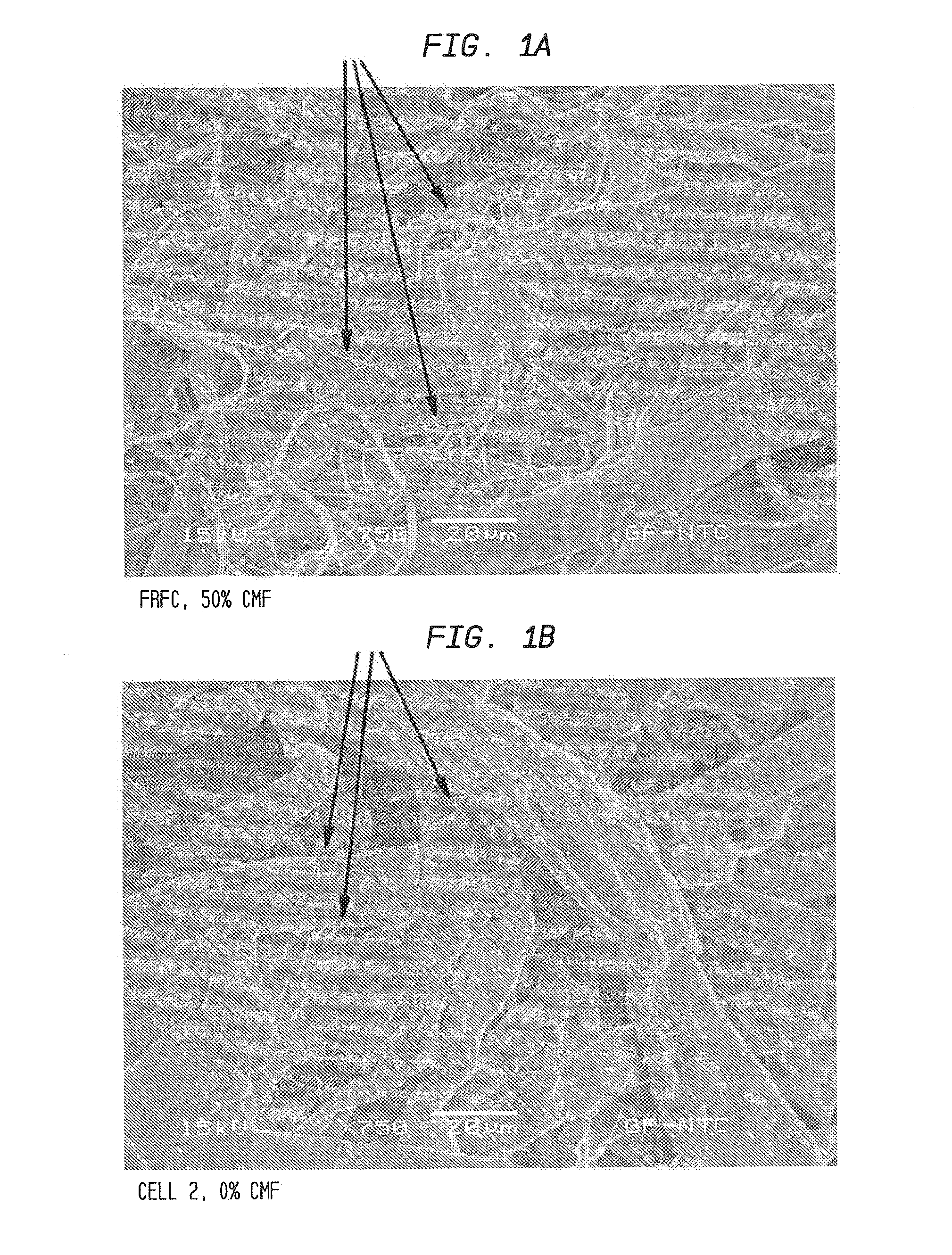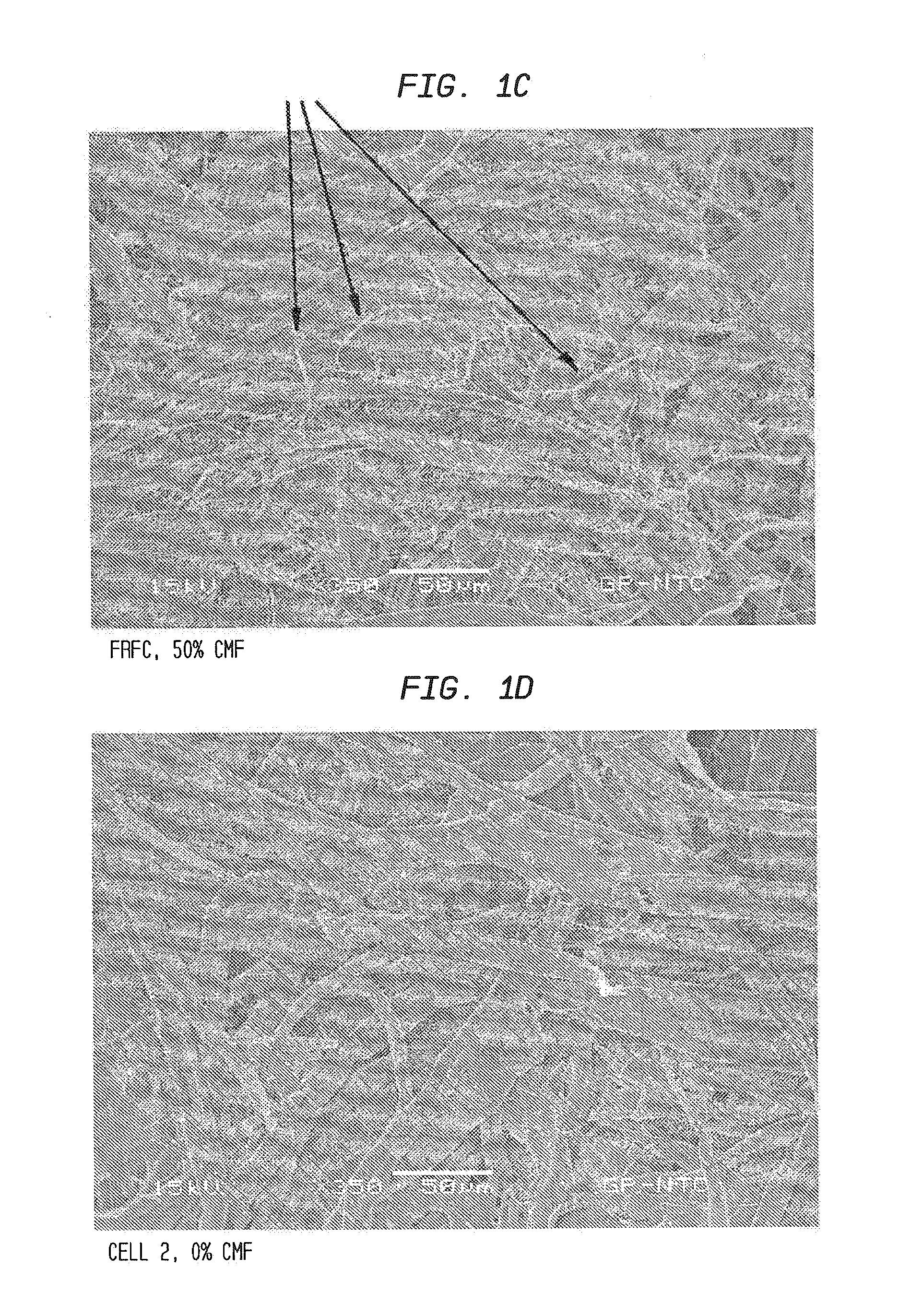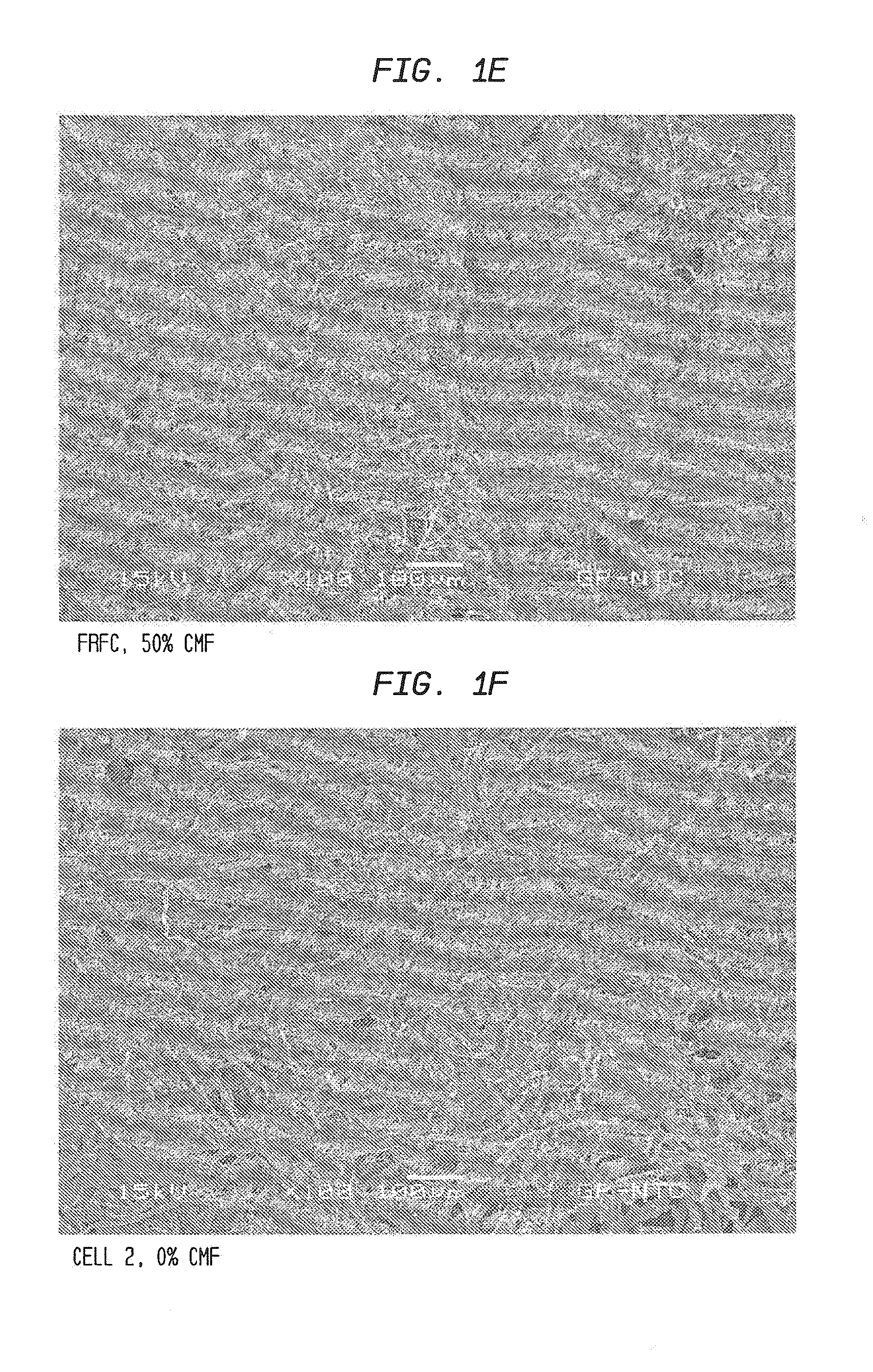Multi-Ply Wiper/Towel Product With Cellulosic Microfibers
a technology of microfibers and wipers, applied in the field of multi-ply wipers, can solve the problems of not having the absorbent capacity of premium paper towels, not being easily re-pulled or recycled, and existing products are relatively difficult and expensive to produce, and achieves high absorbency and high efficiency
- Summary
- Abstract
- Description
- Claims
- Application Information
AI Technical Summary
Benefits of technology
Problems solved by technology
Method used
Image
Examples
example 1
Perforated Polymeric Belt Creping
[0173]A series of belt-creped base-sheets was prepared with the materials and layering described in Table 5, with the CMF having the approximate fiber length distribution shown in FIG. 4.
TABLE 5Base-sheet CellsNBSKCMFBWCMCAmresCell%%lb / Rlb / tlb / tLayeredComments1100014012NoControl, balanced charge2802014012No20% CMF, two-ply towel3604014012No40% CMF, two-ply towel4406014012No60% CMF, two-ply towel51000141240NoControl, high resin68020141240No20% CMF, two-ply towel, high wet76040141240No40% CMF, two-ply towel, high wet84060141240No60% CMF, two-ply towel, high wet96040141240Yes100% CMF on surface104060141240Yes100% CMF on surface, calender114060141240NoHigh wet / dry 3 lb / t GP-C in MC 1and MC 2124060141240NoHigh wet / dry 3 lb / t GP-C, calender136040141240NoHigh wet / dry 3 lb / t GP-C in MC 1and MC 2
[0174]100% NBSK was delivered from a first machine chest. 100% CMF was supplied from a second machine chest. The softwood fiber was refined an average of 2.2 HPD / ton ...
example 2
Fabric Creping
[0197]Basesheets having the properties set forth in Table 9 were made using fabric creping technology in which the nascent webs were creped from a creping cylinder using a woven creping fabric. These basesheets were converted to finished product towels by embossing one ply with the emboss pattern shown in FIG. 26 (Patches) and glue laminating it to an unembossed ply, as set forth in Tables 9 and 10.
TABLE 9FRFC / CMF Basesheet Data, (fabric creped) Basesheet PropertiesCD WetTensEm-TL8 SheetBasisMDMDCDCDFinchboss2008-CaliperWeightTensileStretchTensileStretchCured-Cellply1905DescriptionFurnishmils / 8 shtlb / 3000 ft2g / 3 in.%g / 3 in.%g / 3 in.1x14-119721 22950 / 50 M / A85.115.3175426.416385.558715-119723 23950 / 50 M / A83.215.3169523.315275.852115 lb / ream Control Average (Calendered)84.115.31,72424.91,5825.6554222-119731 100850 / 50 M / A82.111.7174519.814545.5504x24-119733 103050 / 50 M / A77.111.6205420.813385.152012 lb / ream Control Average (Uncalendered)79.611.71,89920.31,3965.35123x29- 1197...
PUM
| Property | Measurement | Unit |
|---|---|---|
| number average diameter | aaaaa | aaaaa |
| wipe-dry time | aaaaa | aaaaa |
| wet breaking length | aaaaa | aaaaa |
Abstract
Description
Claims
Application Information
 Login to View More
Login to View More - R&D
- Intellectual Property
- Life Sciences
- Materials
- Tech Scout
- Unparalleled Data Quality
- Higher Quality Content
- 60% Fewer Hallucinations
Browse by: Latest US Patents, China's latest patents, Technical Efficacy Thesaurus, Application Domain, Technology Topic, Popular Technical Reports.
© 2025 PatSnap. All rights reserved.Legal|Privacy policy|Modern Slavery Act Transparency Statement|Sitemap|About US| Contact US: help@patsnap.com



